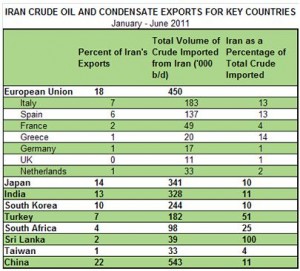US Drones Over Persian Gulf Now Have Escorts
The latest incident in the cat and mouse drone games the US and Iran are carrying out has an Iranian jet coming close to a US Predator drone over the Persian Gulf. US reports on the incident all rely on information released by Defense Department spokesman George Little and every report that I have read in the media includes, but does not comment on, the fact that this drone was accompanied by two US escort planes. As recently as the incident back in November when Iranian jets fired on a drone it is clear that drones were not escorted, so the presence of escorts is a new development.
Here is the New York Times on the incident:
The Pentagon press secretary, George Little, said that in the episode on Tuesday, an Iranian F-4 jet fighter approached within 16 miles of the Predator, which was being escorted by a pair of American military aircraft. United States officials did not say what type of American planes were involved.
“The Iranian aircraft departed after a verbal warning,” Mr. Little said. An initial Pentagon statement said one of the American escort planes had fired a flare to warn the Iranian jet away but later retracted that report. Mr. Little said that after the encounter in November, the United States sent a message to Iran that the American military would “continue to conduct surveillance flights over international waters consistent with longstanding practice and our commitment to the security of the region.”
Similar language is used to repeat Little’s information in reports from Bloomberg and the AP report carried by NPR.
That the escorts are new is clear from this CNN story about the November incident:
Two Iranian Su-25 fighter jets fired on an unarmed U.S. Air Force Predator drone in the Persian Gulf on November 1, the Pentagon disclosed on Thursday.
/snip/
Two U.S. officials explained the jets were part of Iran’s Revolutionary Guard Corps force, which has been more confrontational than regular Iranian military forces.
At least two bursts of gunfire came from the Su-25s’ cannons. The drone started to move away but the Iranian aircraft chased it, doing aerial loops around it before breaking away and returning to Iran.
/snip/
The drone’s still and video cameras captured the incident showing two Su-25s approaching the Predator and firing onboard guns.
The Iranian pilots continued to fire shots that went beneath the Predator but were never successful in hitting it, according to the officials.
U.S. military intelligence analysts are still not sure if the Iranian pilots simply were unable to hit the drone due to lack of combat skill, or whether they deliberately were missing and had no intention of bringing it down.
Clearly, the account of this incident is based on the cameras that were aboard the drone and no escort planes were present or we would also have the accounts of the escort pilots for what transpired. We also presumably would have had an account of our escort planes interacting with the Iranian jets.
The presence of the escorts could be a simple act of physical security. The very next paragraph in the New York Times story quote above states:
“We also communicated that we reserve the right to protect our military assets as well as our forces and will continue to do so going forward,” Mr. Little said.
There is an additional possibility for why the drones now have escorts. As Marcy noted when Iran came into possession of our RQ-170 in December of 2011, there was reason to believe that Iran may have hacked into the drone’s control system and brought it down. Iran now flatly claims that to be the case and in fact the account of this most recent incident by PressTV concludes with this paragraph:
The Iranian military also grounded a US RQ-170 Sentinel stealth aircraft in December, while the drone was flying over the city of Kashmar, some 225 kilometers (140 miles) from Iran’s border with Afghanistan. The RQ-170 was brought down with minimal damage by the Iranian Army’s electronic warfare unit.
Escort planes flown by the US could be present not only for the physical security of deterring Iranian jets intent on shooting down the drone, but they might also be present to monitor electronic signals sent from Iran in attempts to bring the drone under Iranian control. In fact, the presence of two escort planes and the notation from the New York Times that the US did not identify what kind of planes these were leaves open the possibility that one escort could have been a US fighter jet and the other a more conventional aircraft carrying signal monitoring equipment.

